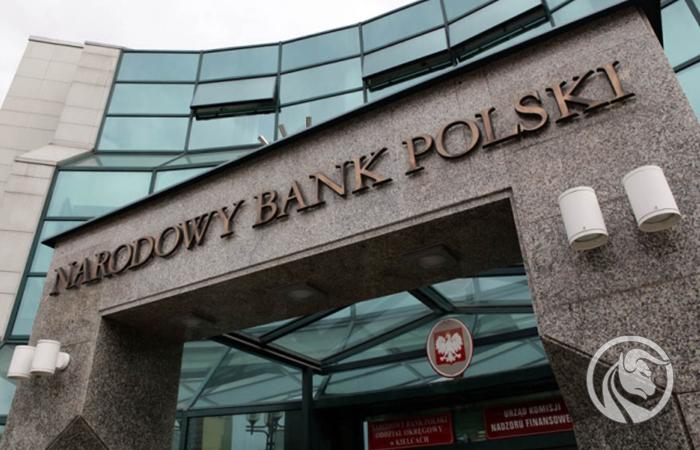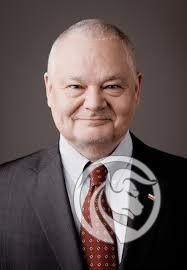Narodowy Bank Polski - a few facts about the central bank of the Republic of Poland
The NBP, ie the National Bank of Poland was established (of course under a different name first) in the years 20. Twentieth century. His story begins in fact during the currency reforms of Władysław Grabski. The NBP performs the tasks specified in the Constitution of the Republic of Poland, the Act on the National Bank of Poland and the Banking Act. These legal acts not only regulate its operation, but also guarantee the independence of the NBP from other state authorities. In this article, we will take a closer look at it.
Be sure to read: FED - One of the most influential institutions in the world
A brief history of the Polish central bank
In January 1924, the Sejm passed a famous currency reform that overcame the catastrophe of hyperinflation and the related economic chaos. In April of the same year for the first time went into circulation gold, pushing Polish brands out of circulation. This task was addressed by the then established Bank of Poland - the predecessor of the National Bank of Poland. Władysław Grabski was the main initiator of "embracing" the country's economy.
The bank officially launched 28 on April 1924. Its main task was to replace Polish brands (in the relation 1 800 000 brands for 1 zloty). This process brings very good results from the point of view not only of economic but also of psychology itself. Initially, the good situation in the budget and balance of payments as well as the accumulated gold and foreign exchange reserves gave a sense of stability and ensured the success of the reform.
The National Bank of Poland officially began operations in 1945. It functioned as a state bank, which was under the supervision of the treasury minister. The NBP adopted rules copied from the statute of the Bank of Poland. From the very beginning, it was assumed that it will be the only bank so far that will not be directly involved in direct financing of enterprises. However, quickly the command-and-distribution economy has fundamentally changed the role of the NBP. Already at the beginning of 1946 the NBP was entrusted with financial control and direct financing of mining, metallurgy and textile industry.
Significant changes took place after 1997. The new Constitution introduced and provided the NBP with a strong position in the system of public institutions. Thanks to it, the central bank was connected with the new body - the Monetary Policy Council. The supervision of banks was entrusted to the Banking Supervision Commission and its implementation to the General Inspectorate of Banking Supervision, separated in the NBP structure.
Bank functions
The originally limited function of a purely issuing bank has now gained several additional powers. The NBP has the exclusive right to issue cash marks that are legal tender in Poland. In addition, it exercises supervision and determines the volume of emission and the moment of entering into circulation. He is responsible for their liquidity. It is also an organ regulating its quantity in circulation.
In relation to other banks, the NBP is their regulator. It aims to ensure the security of deposits held on accounts. He is responsible for the stability of the banking system in Poland. He is the organizer of the monetary settlement system. What's more, it conducts ongoing interbank settlements.
Thanks to these functions, he is responsible for banking services of the state budget. He keeps bank accounts of the government and central state institutions. He performs payment orders for them.
NBP tasks
The basic task of the National Bank of Poland is to maintain a stable level of prices and our zloty. It is the body that is responsible for developing a monetary policy strategy to support the above-mentioned contributions. He cares for the stability of the state's financial system by managing foreign exchange reserves and introducing money into circulation, which allows him to freely regulate its liquidity.
Central bank authorities
The central bank consists of three basic authorities:
- The President of the NBP appointed by the Sejm at the request of the President of the Republic of Poland for the 6-term term of office. He is the superior of all NBP employees and chairs the Monetary Policy Council, the NBP Management Board, and represents the NBP outside. Currently, this function is performed by Adam Glapiński.
- The Monetary Policy Council assesses the activities of the NBP Management Board in the implementation of the monetary policy assumptions and adopts the NBP accounting principles submitted by the President of the National Bank of Poland.
- The activities of the National Bank of Poland are managed by the Management Board. It consists of: the president of the NBP, as chairman, and from 6 to 8 members of the Board, including two vice-presidents of the National Bank of Poland. The NBP Management Board is responsible for implementing the resolution of the Monetary Policy Council. In addition, it adopts resolutions on matters not reserved in the Act to the exclusive competence of other NBP bodies.






















![Forex Club – Tax 9 – Settle tax on a foreign broker [Download the Application] Forex Club - Tax 9](https://forexclub.pl/wp-content/uploads/2024/02/Forex-Club-Podatek-9-184x120.jpg?v=1709046278)
![Trading View platform – solutions tailored to the needs of traders [Review] trading view review](https://forexclub.pl/wp-content/uploads/2024/03/trading-view-recenzja-184x120.jpg?v=1709558918)
![How to connect your FP Markets account to the Trading View platform [Guide] fp markets trading view](https://forexclub.pl/wp-content/uploads/2024/02/fp-markets-trading-view-184x120.jpg?v=1708677291)
![How to invest in ChatGPT and AI? Stocks and ETFs [Guide] how to invest in chatgpt and artificial intelligence](https://forexclub.pl/wp-content/uploads/2023/02/jak-inwestowac-w-chatgpt-i-sztuczna-inteligencje-184x120.jpg?v=1676364263)


![Izabela Górecka – “Success on the market depends not only on knowledge, but also on emotional stability” [Interview] Izabela Górecka - interview](https://forexclub.pl/wp-content/uploads/2024/04/Izabela-Gorecka-wywiad-184x120.jpg?v=1713870578)
![WeWork – the anatomy of the collapse of a company valued at $47 billion [WeWork, part II] wework bankruptcy story](https://forexclub.pl/wp-content/uploads/2024/04/wework-bankructwo-historia-184x120.jpg?v=1711729561)
![Adam Neumann – the man who screwed up Softbank [WeWork, part AND] adam neumann wework](https://forexclub.pl/wp-content/uploads/2024/04/adam-neumann-wework-184x120.jpg?v=1711728724)





![How to transfer shares to another brokerage office [Procedure description] how to transfer shares to another brokerage house](https://forexclub.pl/wp-content/uploads/2024/03/jak-przeniesc-akcje-do-innego-biura-maklerskiego-184x120.jpg?v=1709556924)
![The most common mistakes of a beginner trader - Mr Yogi [VIDEO] Scalping - The most common mistakes of a beginner trader - VIDEO](https://forexclub.pl/wp-content/uploads/2024/03/Scalping-Najczestsze-bledy-poczatkujacego-tradera-VIDEO-184x120.jpg?v=1711601376)
![Learning patience: No position is also a position - Mr Yogi [VIDEO] Scalping - Learning patience - No position is also a position - VIDEO](https://forexclub.pl/wp-content/uploads/2024/03/Scalping-Nauka-cierpliwosci-Brak-pozycji-to-tez-pozycja-VIDEO-184x120.jpg?v=1710999249)
![When to exit a position and how to minimize losses - Mr Yogi [VIDEO] Scalping - When to exit a position and how to minimize losses - VIDEO](https://forexclub.pl/wp-content/uploads/2024/03/Scalping-Kiedy-wyjsc-z-pozycji-i-jak-minimalizowac-straty-VIDEO-184x120.jpg?v=1710336731)



















